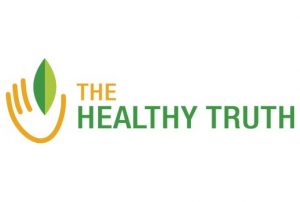
Do you find yourself yawning at 3 p.m.? Do your eyes become heavier mid-afternoon? Would you say your work performance or willingness to do anything hits a complete wall post-lunch? If you answered yes to any of these questions, you’re not alone.
It’s an epidemic. At around 2:30 p.m., you and those around you seem to have the energy sucked right out of you. You become tired, your motivation tanks, and that afternoon coffee starts looking really tempting. But what’s the deal? Well, like you, I was curious about the 3 p.m. slump, so I decided to do some digging.
There are a few theories floating around regarding the afternoon slump. If you look back to our ancestors, they partook in two periods of sleep a day, with the second coming around mid-afternoon. Think about it—even if you sleep for a solid eight hours, you’re still awake for 16. That’s quite unproportionate.
Neuro-specialist Dr. Fiona Kerr explained, “A major reason for [afternoon slumps] is that human beings are biphasic (physically designed for two sleeps a day), with two major bodily rhythms (homeostatic sleep drive and circadian arousal) which pull us in different directions in terms of staying awake or sleeping, but they fascinatingly align in the middle of the day to create a nap zone.”
In laymen’s terms, Dr. Kerr is suggesting that to combat the 3 p.m. slump, we should take a 15- to 20-minute nap (wouldn’t that be nice?). Unfortunately, that isn’t possible for many of us who work nine to five. But if you can sneak away for a cat-nap, Dr. Kerr suggests that a mere 15 minutes is enough to refresh the brain and promote alertness, improving motor skills, mood, creativity, and stamina.
Unfortunately, we can’t just sleep an extra 20 minutes to get the same benefits either. Dr. Kerr explains that sleeping longer overnight does not give you the same benefits as a short afternoon nap.
The second theory
Another theory looks at the effects your lunch has on the rest of your day.
Think about it, low afternoon energy conveniently comes a short few hours after lunch, which may be attributed to the body’s ability—or lack thereof—to burn fat.
Again, let’s go back to ancient times. Our great ancestors used to burn fat for energy, but nowadays, we seek out refined and sugary carbs for an energy kick that results in a crash. So, instead of burning fat post-lunch, we are merely burning carbohydrates that contribute to post-lunch hypoglycemia.
But how do we avoid this post-lunch crash? Well, experts suggest avoiding fast-burning carbs and opting for healthy fats, which include nuts, olive oil, and avocados.
There is another aspect to the mid-afternoon slump and it involves exercise and movement. Frankly, we aren’t getting enough of it. Unfortunately, regardless of how much you exercise, we all sit way too much. And because of all this sitting, we tend to feel tired and groggy.
To combat all the sitting we do, we simply just need to move more. Even if you’re at work “chained to your desk,” you can still take a few minutes every hour to get up and move. Go grab water in the kitchen… walk around the office… stand while answering the phone… hand deliver documents instead of emailing them… do anything you can think of to move. You should really try and move around as much as possible to prevent the wretched 3 p.m. bug.
So, there you have it, different explanations that all explain why you’re so tired in the afternoon. You could try and squeeze in an afternoon nap, but if that isn’t possible, you should probably eat a healthier lunch and increase your daily movement to remain energized.
Implementing these tips into your daily life can help you feel less fatigued and get you through that slump.
Until next time,
Emily Lunardo